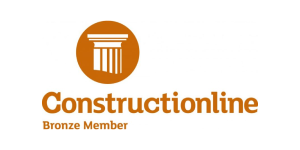
An Ultimate Guide to Foam Concrete
Foam concrete is a lightweight, fast-setting, closed-cell polyurethane foam that can be used as a base for construction. It is a mixture of hot foam and water-containing additives. Foam concrete has been around for decades, but it is gaining popularity as it is more affordable and easier to use.
It is a composite material that can be used in a variety of applications. This type of concrete is made up of several ingredients, including sand and cement. The mixture is then pumped into a mould and allowed to harden. The resulting product is lightweight and strong, making it an excellent option for many construction projects.
This write-up covers everything about foamed concrete, how it is formed, and why it is preferred the most for constructionbenef.
What is a Foam Concrete?
Foam concrete is made of polyurethane foam, which is a synthetic polymer. It is a lightweight material, with excellent insulating qualities and high thermal resistance. It can be used as an insulation material, especially in cold climates such as the UK. The secret to this product’s success lies in its ability to retain air and insulation properties for years.
The air makes the concrete lighter and more flexible, making it easier to work with than regular concrete. This also means that foam concrete can be transported without having to use heavy equipment or vehicles. The lightweight nature of foam concrete also makes it an excellent option for buildings that require high ceilings, such as buildings with high-ceilinged living spaces or large conference rooms.
How Foam Concrete is Produced?
There are mainly two ways used for the production of foam concrete.
Pre-Foam Method
Pre-foam method of foam concrete production can be done both off and on-site. It is usually formed by partial filling of the truck with ready-mix concrete. The rest of the space is filled with foam and mixed using the drum’s inside blades. A pumping option is also available for mixing the material.
Inline Method
The inline foamed concrete formation method helps produce heavy or lightweight concrete according to the construction needs. It can be carried and delivered to the site through ready-mix trucks. This form of foam generator works by pumping the clean base material and injecting the foam under pressure into the concrete lines. Further, the formed material is combined using a sequence of in-line mixer plates.
You can check out our blog for detailed information on what foamed concrete is and different methods of production.
What Are The Benefits of Foam Concrete in Construction?
Foam concrete has several advantages over conventional concrete when used in construction projects.
Because it’s so lightweight, It can be used on top of other materials such as wood or metal. This makes it an ideal choice for building roofs over houses or other structures. When combined with other materials like fibreglass or steel, it produces an incredibly strong and durable composite material that can withstand harsh weather conditions and heavy loads without cracking or breaking down.
Other Benefits include:
Durability
Foam concrete can last longer than other types because it isn’t affected by moisture or heat. It also doesn’t crack or break down over time as traditional concrete does. This makes it ideal for outdoor projects where weather conditions can affect the material’s strength and durability.
High Fluidity
This characteristic of foamed concrete ensures construction is completed easily and with better finishing. All this is possible with the seamless installation, pouring of the material, and levelling it appropriately.
Lightweight
Many foam concrete surfaces are only one inch thick, making them extremely lightweight compared to traditional concrete surfaces which can be up to six inches thick! This makes them easier on your back when working at high speeds, which also helps with efficiency during construction projects.
Cost-effectiveness
Compared to traditional concrete, foam concrete costs less money overall because there are fewer materials involved in its production process. Foam concrete eases marginal construction. As a result, minimal loading is required. The use of high-volume equipment ensures rapid installation. Also, foam concrete needs less maintenance as the material is durable. Thus, saving a lot of money.
Eco-Friendly
It is a clean material free from toxic components. Furthermore, all the waste materials used to create foam concrete are well-tested and researched before use. All of this makes such a material eco-friendly.
Ideal for Multiple Use Cases
It can be used for producing construction blocks, interior partition panels, floors, acoustic insulation, etc. Also, highly dense foamed concrete helps build strong basements and floors.
Cold Resistant
Foam concrete is a highly effective and isolating material. Construction projects executed using such material are heat and cold-resistant. As a result, the cost associated with heat or air conditioning reduces. Foam concrete is usually used in countries with 4 seasons of both hot and cold weather.
Conclusion
Foamed concrete offers several advantages over conventional concrete construction methods. The biggest advantage is that it can be sprayed onto the site instead of being mixed in situ (on-site). This means that the project can be completed faster and with less labour, which reduces costs. The material also self-heals when damaged, making it ideal for applications where there is a high risk of impact damage or destruction.
So, get the finest foamed concrete from The Thames Concrete and fulfil all the needs associated with your major construction needs. We deliver on-site material formed using multiple foamed concrete characteristics and consistency requirements. Also, on-site mixing is done so the resulting material s high quality and there is no mess like wastage or over-ordering.

















